Top Photo: Original Caption: "American assault troops, carrying full equipment, move onto Omaha Beach, in Northern France. Landing craft, in the background, jams the harbor." Original Field Number: ETO-HQ-44-4754-35. Photographer: Wall. National Archives NAID: 176887736
The assault of the Normandy coast and Hitler’s Atlantic Wall is one of the most significant events in history. The landing of over 130,000 Allied troops on the shores of occupied France was made possible by a flotilla of approximately 6,900 vessels of various sizes along with an aerial fleet overhead that included 11,000 airframes. This joint effort years in the making was an assault of unimaginable magnitude, with British and Canadian forces storming the beaches of Gold, Sword, and Juno as the Americans landed on Omaha and Utah. Each beach landing on June 6 has its own story to tell, but in the American sector, the differences between the landings were stark. While one set of landings went relatively trouble-free, the other was rife with unfortunate circumstances.
While the Overlord operation was a combined effort of land, sea, and air forces, the amphibious assault plan was given the code name Neptune. The Allied naval forces for the invasion fell under the command of Royal Navy Admiral Bertram Ramsay, who was designated Commander-in-Chief of the Allied Naval Expeditionary Force Commander. The American portion of the Allied flotilla was commanded by US Admiral Alan G. Kirk, who oversaw the Western Task Force (designated Combined Task Force or CTF 122). Kirk’s CTF 122 supported the landings on both Utah and Omaha. With an additional division of labor, each objective beach required its own assigned task force. Force Omaha (Force “O”) commanded by Admiral John Hall was accompanied by Force Utah (Force “U”) headed by Admiral Don Moon. Force U was responsible for landing VII Corps headed by Major General J. Lawton Collins, while Force O supported Major General Leonard Gerow’s V Corps. Despite their similar mission sets, the execution of the two amphibious landings was very different.
Overall, CTF 122 had a more difficult task than the Eastern Task Force landing at Gold, Sword, and Juno Beaches. While the British and Canadian force might disagree, consider that Force U had to traverse a greater distance to the objective area and under adverse weather condition. Additionally, CTF 122 transport areas were located farther from the shore, making make the ship-to-shore movement more perilous, and Force O had to contend with more obstacles in the surf zone. The terrain on Omaha was also more conducive for the defense and was heavily fortified with prepared positions having excellent fields of fire. Lastly, the prelanding bombardment failed to hit prepared and fortified enemy defenses along the shoreline; as a result, the early landings potentially faced the Wehrmacht’s full combat might.
With the original assault scheduled for June 5, uncooperative weather forced General Dwight D. Eisenhower to call for a 24-hour weather delay. With men staged aboard vessels, ships waiting to set sail, and tension and frustration building, Eisenhower eventually gave the go-ahead for a June 6 landing. Even after the weather delay, the Channel crossing on June 5 was still problematic. Sustained winds between 14 and 20 knots were accompanied by strong gusts, and the English Channel’s waves that day were four to six feet high; many of the troops aboard the CTF 122 convoys suffered from seasickness. Traversing the Channel in such weather forced some of the overloaded Landing Craft Tanks (LCTs) of Moon’s Force U to slow their pace as they navigated the waves, causing them to fall astern of the assault fleet.
Despite the uncooperative weather and the postponement, the Allies achieved both tactical and strategic surprise. While the Allies took measures under Operation Fortitude to deceive the enemy regarding potential landing sites, as CTF 122 approached, German radio transmission remained largely silent. With many in the German high command expecting the Allied landings to take place at Calais or other locations to the east, troops and armored formations remained at their garrisons or in static positions. Assuming the bad weather would preclude any kind of assault, German leadership remained blissfully unaware. Kriegsmarine Naval Group Commander Admiral Theodore Krancke at his headquarters in Paris was perplexed when informed that a BBC broadcast announced that the invasion was underway. Hearing the news, the Krancke responded: “Hardly likely that the invasion would announce in advance over the radio.” Only after airborne troops landed and large vessels were reported at Port-en-Bessin did he order any kind of response—but it hardly could have made any difference as the full weight of the Allied Expeditionary Force headed his way.
The Landings at Utah Beach
With Admiral Moon on his flagship USS Bayfield, the 865 vessels of Force U launched from ports at Salcombe, Dartmouth, Brixham, Yarmouth, Poole, and Belfast carrying VII Corps. Organized into 12 individual convoys, the smaller flotillas moved from their respective ports toward the rendezvous point at sea. After rendezvous, each ship then had to be sequenced based upon its intended beach and the sequence of the landing waves. Complex as this seaborne operation was, the situation was further confused by the 24-hour delay, as some of the slower vessels were already underway and had to turn around. Given the false start, some vessels requiring refueling returned to different ports of departure. Eventually, the ships of Moon’s command arrived in the assault area by 2:29 a.m. and anchored 22,500 yards from the beach.
As the debarkation began, an 18-knot west wind was accompanied by a moderate sea with a high cloud ceiling and good visibility. The transport area was free of enemy fire, and the embarkation aboard the Landing Craft, Vehicle, Personnel (LCVPs) and Landing Craft Assault (LCAs) was done without significant issue. Except for the dual drive (“DD”) M4 Sherman tanks, the landing force crossed the line of departure on time and headed toward the beach. Despite problems with the control vessels guiding the landing craft inland, the first waves made it ashore at 6:30 a.m. without enemy interference. Pre–H-Hour bombardments helped shape the environment along with salvoes coming from Landing Craft Tank (Rocket) (LCT(R)s) drenching the beach with fire. The plan had two waves of LCVPs coming ashore followed by DD tanks and a third wave of Landing Craft Tank (Armored) (LCT(A)s) accompanied by demolition units in LCVPs and Landing Craft Mechanized (LCMs). However, with substantial beach obstacles in the way, the demolition units were moved up to the second wave.
The control vessels struggled to guide the landing craft in the smoke and dust from the pre–H-Hour bombardment, which obscured the coastline. Additionally, a current running west to east pushed the initial waves to land approximately 1,000 yards from their intended beach. But this navigation error proved beneficial as the actual landing beach was less defended and held fewer obstacles. The initial landings were successful, and about 20 minutes after the first waves came ashore, the DD tanks made landfall to support the infantry formations moving inland. The landings continued smoothly and by 9:45 a.m., some three hours after the first troops landed, 14 more waves arrived with the beach largely cleared of obstacles. By late morning, Landing Ship Tanks (LSTs) began disgorging their cargoes on the beach, and the entire 4th Infantry Division (ID) was ashore by late afternoon. By 6:00 p.m. some 21,328 troops, 1,742 vehicles, and 1,695 tons of supplies had made it ashore. Moreover, by midnight, Force U troops ashore made contact with the 101st Airborne Division paratroopers who had dropped behind the landing beaches earlier that day.
Despite the successful landing some enemy efforts in the Utah sector were effective. While the enemy guns were largely silent during the assault, well-laid sea mines on the Cardonet Shoals spanned the boat lanes. Taking their toll that day, the carefully placed mines sunk LCTs 362, 592, and 777 and Landing Craft Flak (LCF) 31. The destroyer USS Cory also stuck a mine that morning and quickly sank. In the following days, three more destroyers and a Landing Craft Infantry (LCI) hit mines with many of them meeting the same fate. As the weeks passed, mine-related losses continued to mount: eight more LSTs were sunk along with a host of other vessels. Regardless of the ship losses, the Utah landings were clearly a success and executed with few problems.
The Landings at Omaha Beach
Force O had quite the opposite occur, with a complete reversal of the seaborne experience. Tasked with landing V Corps, the 1,500 ships under Hall’s command operated largely in the Vierville-Colleville sector. Hall’s Force O assembled in the UK ports of Portland, Poole, Exmouth, Falmouth, and Belfast and by May 30 was organized into five convoys, ready to sail. Unlike Force U, it crossed the Channel without difficulty, but the conditions for the ship-to-shore movement were reversed. When VII Corps came ashore at Utah, its assault waves were protected by the weather from the lee of the Cotentin Peninsula. V Corps’ landings were farther removed east from the lee. As a result of the geographical difference, Force O’s ship-to-shore movement was severely hampered by uncooperative weather and a high sea state.
Preparing for the ship-to-shore movement, the V Corps landing force debarked from its larger troop transports to the smaller LCVPs or LCAs. But, given the prevailing weather with winds between 19 and 24 miles an hour, the process was difficult. Upon the swirling sea, landing craft swayed as they swung from their davits. Once in the ocean, the tiny vessels were cast about like corks bobbing in the water; one soldier recalled the men in his LCA being tossed around like matchsticks as the waves crashed around them. Once embarked for movement ashore, the men steadied themselves as they circled thousands of yards offshore awaiting the arrival of H-Hour. During this tense time, not only did the four- to six-foot waves make seasickness endemic aboard the landing craft, but the sea poured over the gunwales, filling the vessels with water. In some instances, standing knee-deep in water, men bailed out their flooded LCAs using their helmets. Given this environment, many landing craft had difficulty making it ashore, with some floundering and even capsizing in transit. Enemy fire also made the journey even more dangerous: unlike at Utah, German artillery fired on the inbound craft, and some took direct hits. With mother nature and the enemy working against them, many landing craft missed their intended landing beaches, became mixed into different scheduled waves, or did not arrive at all.
Unlike Utah Beach, the Omaha sector included great natural defensive terrain, which was festooned with well-prepared gun emplacements, tank traps, and machine gun nests. Pre–H-Hour fires by the Navy and Army Air Forces failed to knock out the enemy positions. The plan was to have the first wave land at 6:30 a.m. with infantry quickly followed by demolition parties two minutes later to clear beach obstacles. These initial waves at “Dog Green” sector were met with fierce resistance. Demolition teams suffered a 40 percent casualty rate with initial waves suffering equally or worse. In one LCA, 28 of the 30 men aboard were killed. Following the initial waves, LCTs were to land armor ashore at H-5 along with DD tanks arriving five minutes later. Unfortunately, the armor destined for Dog Green was prematurely launched some 6,000 yards from the shore. As a result, the fragile skirts surrounding the tanks collapsed in the rough sea state, and the DDs sank beneath the waves. Tanks arriving from the LCTs to the western parts of Omaha made it ashore but were quickly knocked out upon landing. However, at other sectors of Omaha, more to the east in the 1st ID sections, the DD tanks and those on LCTs supporting the 116th Regimental Combat Team landed successfully. These key assets cleared the way for follow on forces, but even with the armor ashore, movement inland was slow.
As the prepared enemy defenses engaged the initial waves ashore, much-needed fire power came in the form naval fire from destroyers assigned to Force O. The USS Carmick, USS Doyle, USS McCook, USS Frankford, USS Emmons, and USS Baldwin along with Royal Navy vessels closed on the beaches at various times that morning. Communicating with Shore Fire Control Parties or establishing other methods of cooperation, these ships sailed within 800 yards of the shoreline. With only a few inches of water under their keels, these small vessels engaged German machine gun nests and defensive positions in direct contact with the assault force. Only a few hundred yards from the enemy positions, some destroyers took direct hits, but they effectively neutralized several German defensive positions. Working together, the combined effects of armor, infantry, and naval fires eventually reduced enemy enabled the troops ashore to make progress inland. By 11:00 a.m., a report from the commander of Transport Division Three reported German troops leaving their positions or surrendering.
Despite the terrible costs, by 1:00 p.m. Colleville was taken, followed by advances in the Easy Red and Fox Green sectors. Other sectors followed suit and by the afternoon the LSTs began beaching themselves and disgorging their precious cargoes. However, such action was repeatedly interrupted by intermittent and accurate enemy mortar and artillery fire. By 3:30 p.m., advance elements of the 1st and 29th ID Headquarters were making it ashore and preparing for operations inland.
The Wehrmacht failed to seriously contest the landings at Utah, with most of the damage done by well-placed sea mines. However, at Omaha, the opposite occurred. German forces seriously contested the beaches while damage to Force O vessels from mines remained negligible. Although intelligence reported minefields in the approaches to the beach and in the transport area, at D-22, Force O reported no mines in the Omaha area. While Force O avoided losses from mines, German fires successfully sunk one LCT and a dispatch boat while damaging one LST, three LCIs, seven LCTs, another dispatch boat, two LCAs, and scores of LCVPs. Losses would continue to mount for the next few weeks with one ship sunk and well over 100 landing craft of various sizes lost or damaged either by enemy fire or stormy seas.
In the end, the experiences of the two landing flotillas stood in stark contrast. Force U suffered at the hands of the weather while en route, while Force O reported no significant problems. The Utah landings were relatively trouble-free despite landing 1,000 yards off target. Good sea states allowed landing craft to effectively make it ashore on time and in an orderly manner. The biggest threat to the Force U fleet was the enemy mines. For Force O, ship-to-shore movement was hampered by rough seas and enemy fires that often precluded landing craft from making it ashore. Furthermore, the Omaha landings were hotly contested, with a tough fight ashore throughout the morning. The movement of armor ashore was also significantly different as some DD tanks floundered and sank while others delivered by LCT were quickly dispatched by enemy fire. Fortunately, enough armor made it ashore in the eastern part of the Omaha beaches to clear enemy obstacles and defenses. Furthermore, Force O’s assigned destroyers provided key fire support to forces under direct contact throughout the morning and played a vital role in the tactical fight. Unlike Force U, the sea mine issue never emerged near Omaha Beach, with effective enemy ground fire posing the only real threat.
While the two forces had different experiences during D-Day, they both had sufficient capability to ensure the landings were successful and establish a toehold on the Continent. Flexibility, resiliency, and the use of mass built into the Neptune plan made a difference. Initiative and quick action on the part of tactical-level commanders also were impactful at key parts of the operation. Despite the differences in the combat actions on June 6, both Force O and U opened the door for the liberation of the European Continent.
References:
- Kirland, William II, Destroyers at Normandy. Washington Naval Yard; Naval Historical Foundation,
1984. - Morison, Samuel Eliot. History of United States Navy Operations in World War II, Volume XI: The
Invasion Of France and Germany 1944-1945. Boston, MA: Brown and Little and
Co. 1957. - National World War II Museum Digital Archive. Oral Interview, Baumgarten, Harold.
Available at: https://www.ww2online.org/view/harold-baumgarten#loading-up-and-
crossing-the-english-channel. (Accessed 15 May 2023). - Symonds, Craig. Neptune: The Allied Invasion of Europe and the D-Day Landings. New
York: Oxford University Press, 2014. - US Naval History and Heritage Command. Operation Neptune, The U.S. Navy on D-Day, June 6,
1944. Available at: https://www.history.navy.mil/browse-by-topic/wars-conflicts-and
operations/world-war-ii/1944/overlord/operation-neptune.html. - Yung, Christopher. Gators of Neptune: Naval Amphibious Planning for the Normandy
Invasion. Annapolis, MD: Naval Institute Press, 2006.
John Curatola, PhD
John Curatola, PhD, is the Samuel Zemurray Stone Senior Historian at the Jenny Craig Institute for the Study of War and Democracy.
Cite this article:
MLA Citation:
APA Citation:
Chicago Style Citation:
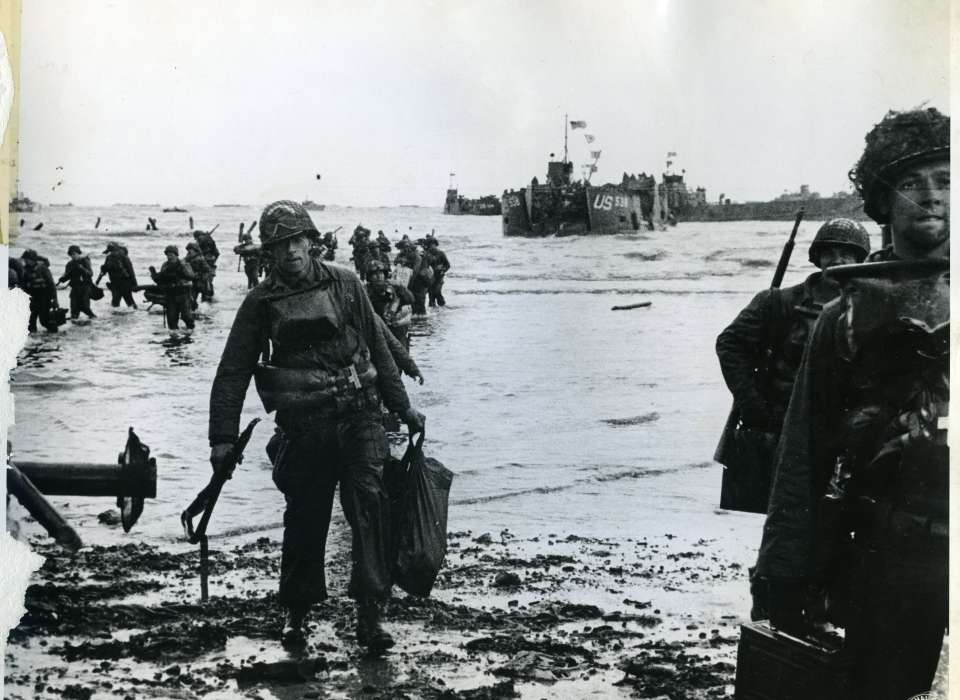
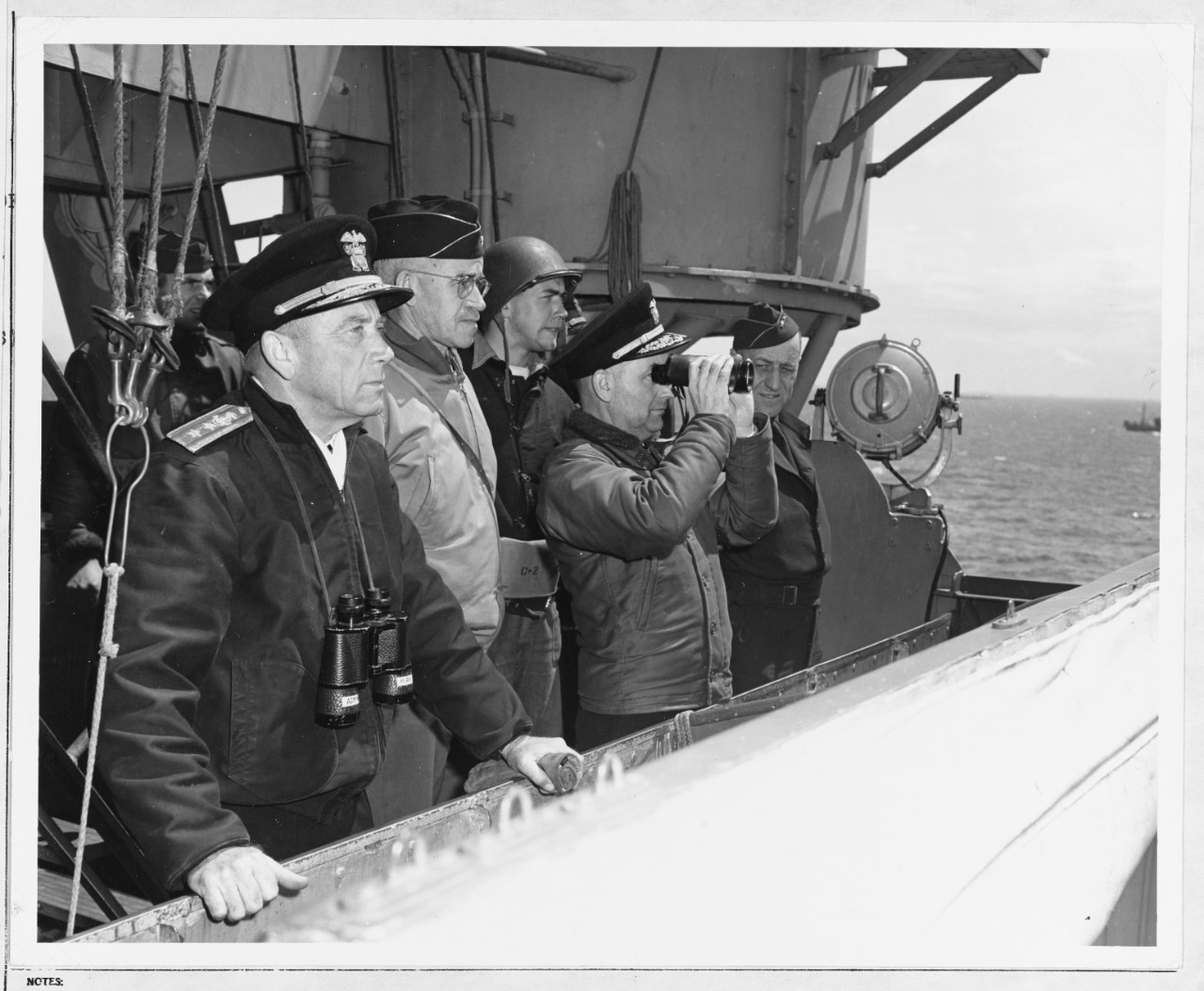
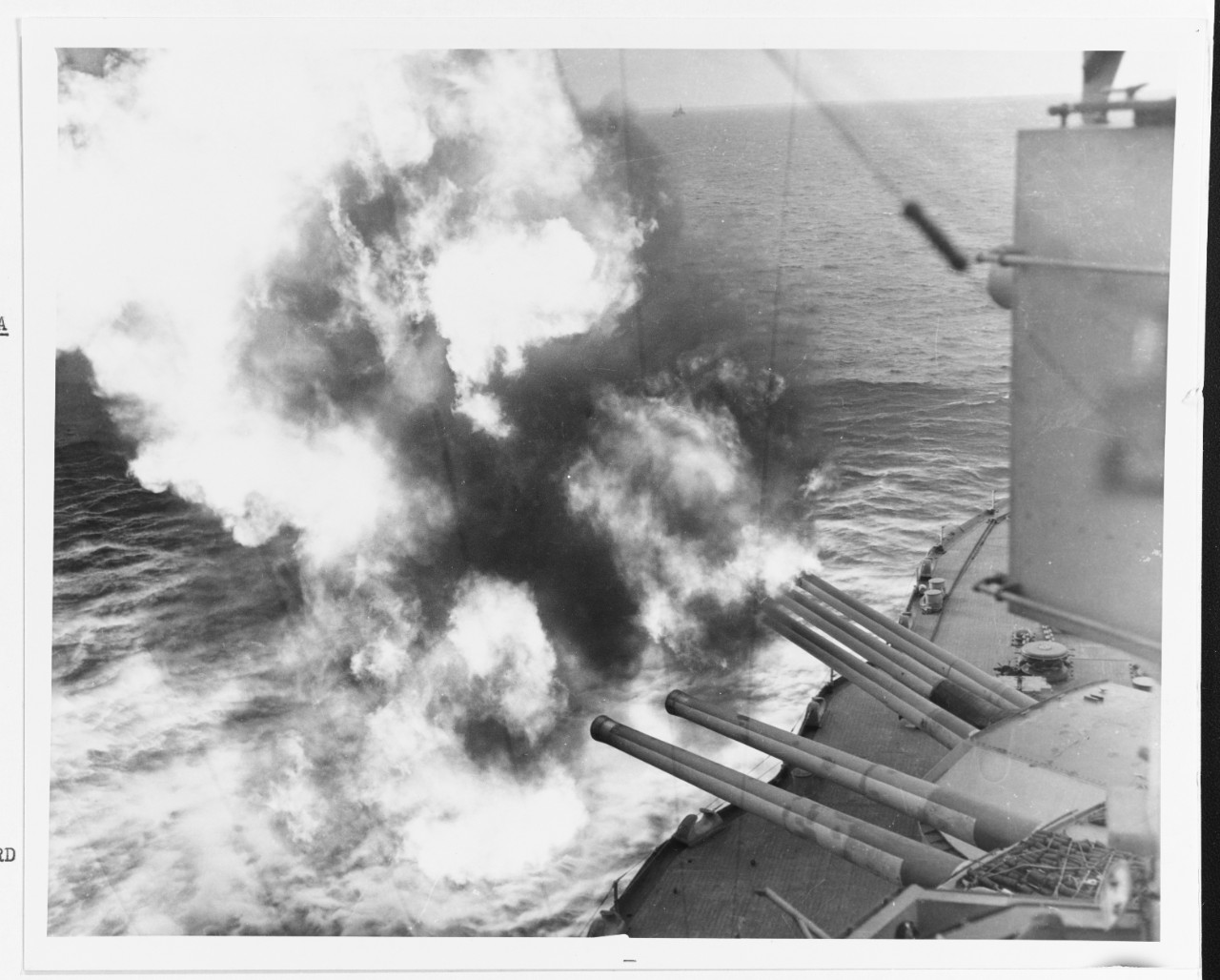
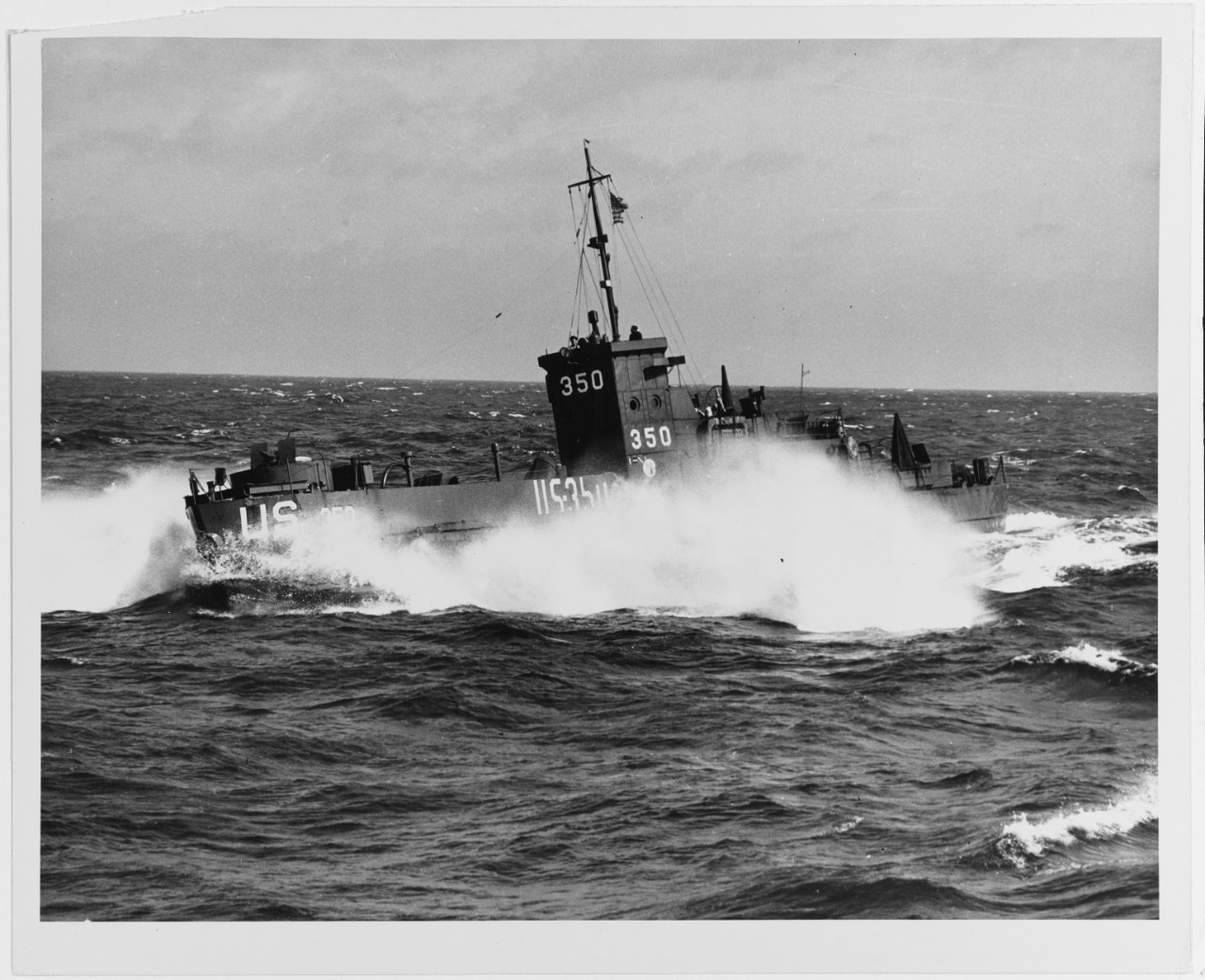
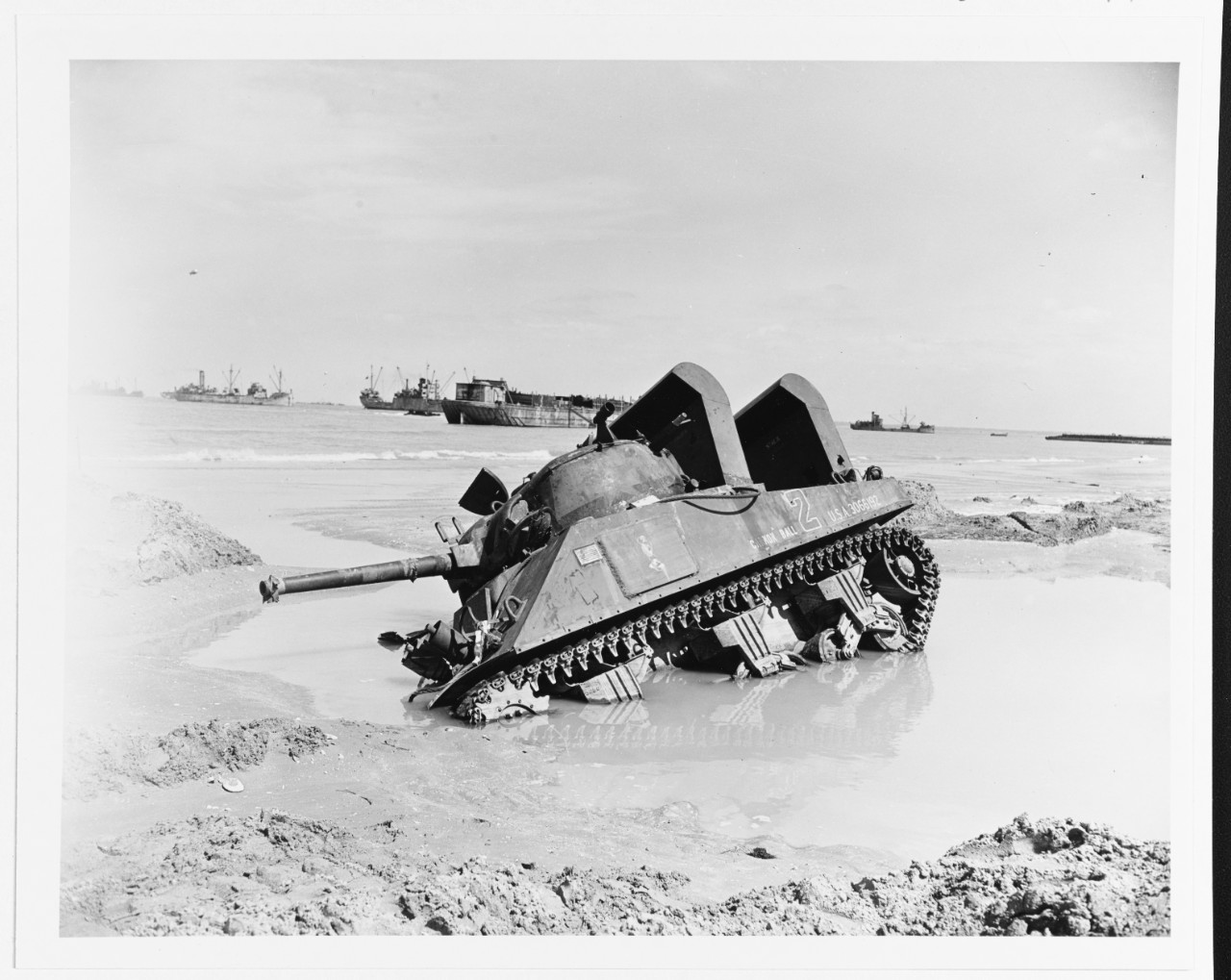
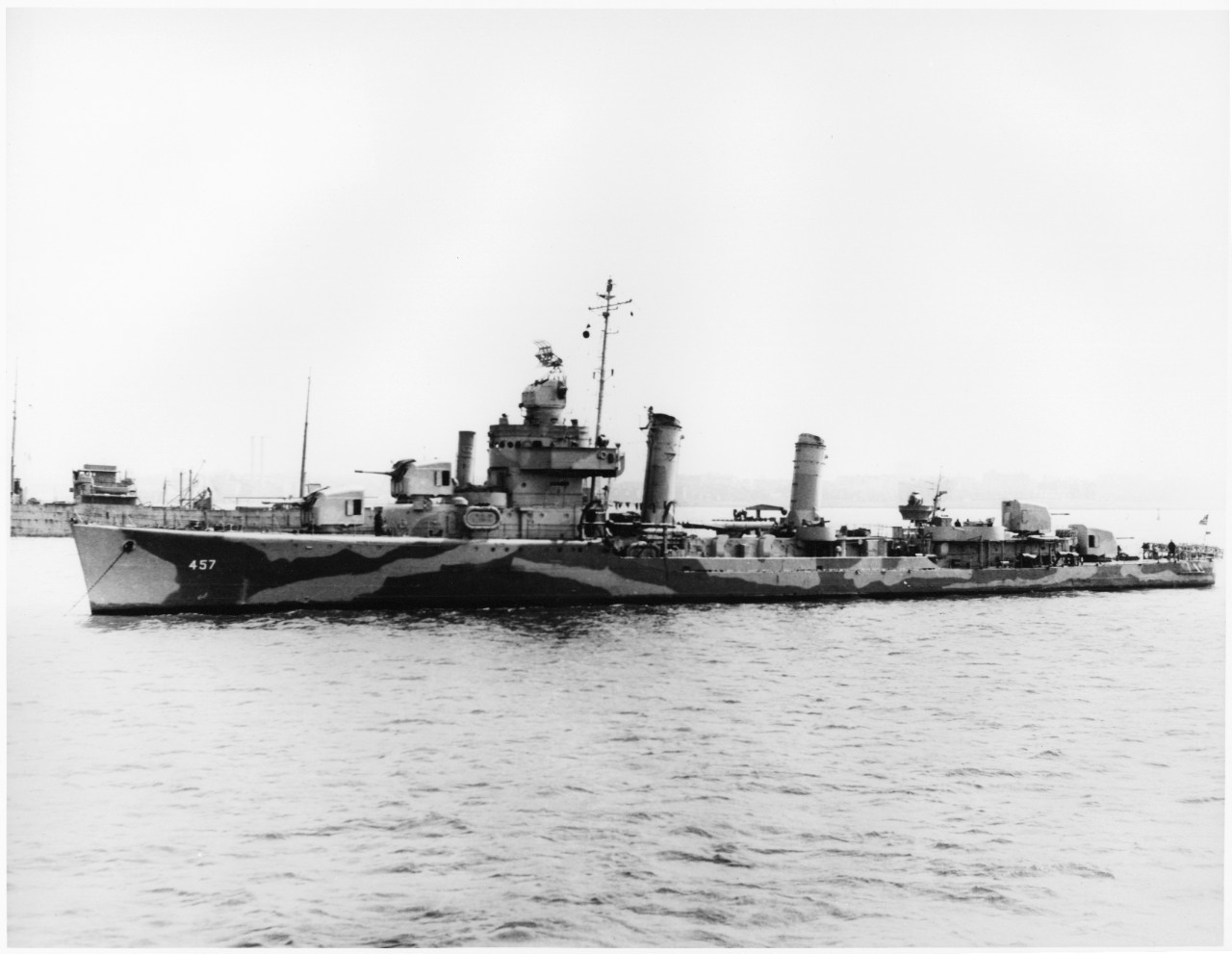

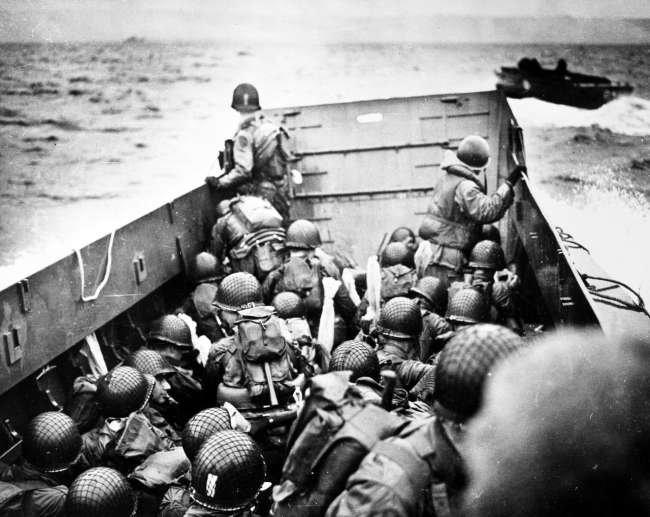
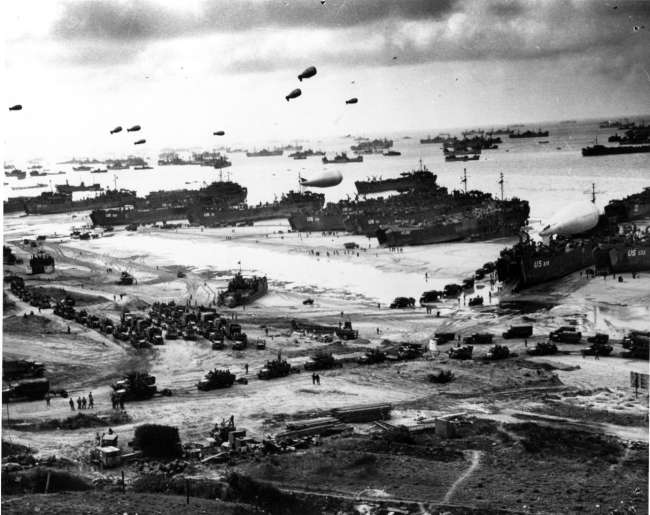
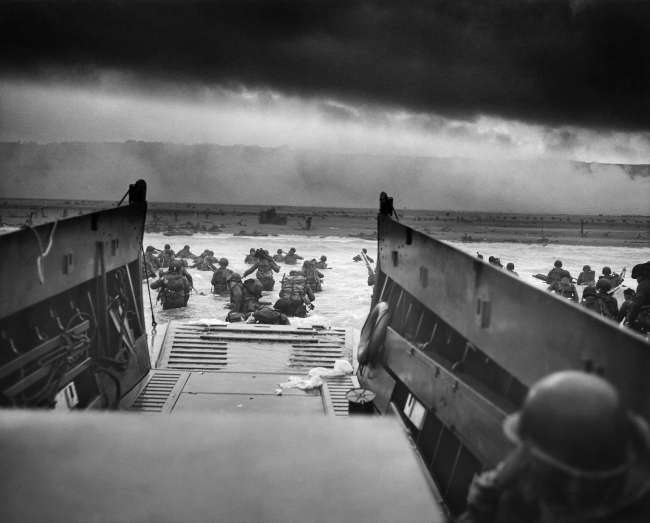
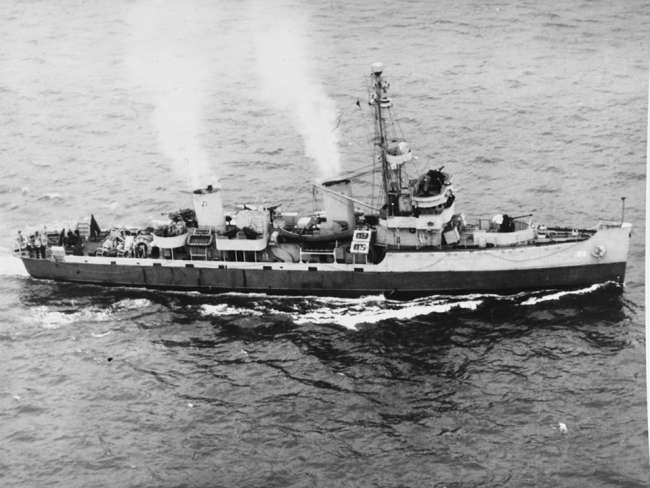



![Max Fuchs, New York City cantor, sings as Rabbi Sydney [sic] Lefkowitz, Richmond, VA, conducts the first Jewish services from Germany.](/sites/default/files/styles/max_650x650/public/2025-10/image1.jpg)



